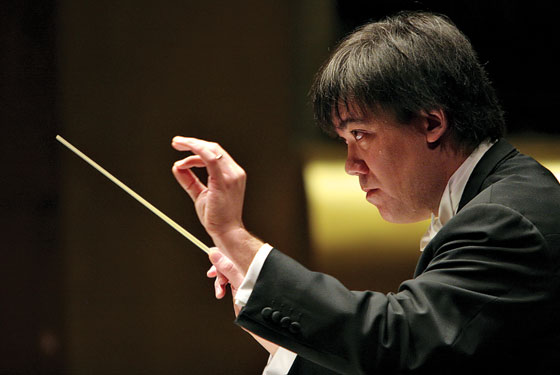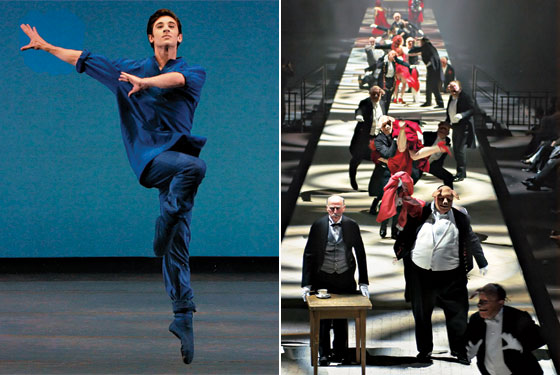
The Big Entrance
When Alan Gilbert, the New York Philharmonic’s music-director-in-waiting, led a free concert in Central Park last summer, he mentioned to the audience that his mother was a member of the violin section. Then, turning back to the orchestra with a little wave, he said, “Hi, Mom,” eliciting 60,000 guffaws. (He didn’t add that his dad, now retired, had also been a Philharmonic violinist.) Gilbert doesn’t take over the Philharmonic until September, but he’s already starting to feel like a member of the family. He’s been a regular on New York’s podiums, leading the Philharmonic, the Met (in Doctor Atomic), the Philadelphia Orchestra, and the Juilliard and Curtis student ensembles. He’s also lobbed out a few plans for the Phil: a new-music ensemble, a renegotiated balance between contemporary music and traditional repertoire, and the world premiere of a work by composer-in-residence Magnus Lindberg; Messiaen’s Poèmes pour mi, sung by Renée Fleming; and Berlioz’s Symphonie Fantastique. That is not just music for a televised party but a calling card for a conductor with strong tastes and a talent for bringing clarity to sprawling, complex scores.
• The Year in Superlatives
• The Top Ten Classical Events
The Year in Superlatives

Best Changing of the Guard: City Ballet’s New Male Trio
Conventional wisdom in ballet says that as one dancer retires, three more wait in the wings to fill his shoes. This year, it happened again, with a singular blitz of talent. Damian Woetzel, City Ballet’s charismatic jack of all dances, stepped offstage this past summer, but three young soloists look poised to inherit his all-American, multidimensional grace: Sean Suozzi is the darkly romantic one (you can see him this winter as Romeo); Tyler Angle, the company’s elegant, assured danseur noble of the future; and the boyishly handsome crowd-pleaser Robert Fairchild, innocent, yearning, and confident as Tony in West Side Story Suite.
Best Choreographer: Benjamin Millepied
He quietly scored a hat trick of commissions this year: an homage to Jerome Robbins (and a collaboration with composer Nico Muhly) for the Paris Opera Ballet; a ballet set to Steve Reich for Pacific Northwest Ballet; and Without, for his pickup troupe of ABT dancers, Danses Concertantes, at the Joyce. It’s an enviable body of work for any young choreographer, especially one who still dances, at City Ballet. Without, with its air of intrigue and simplicity of movement, cements Millepied as someone with a unique vision worth seeing—especially in the spring, when he’ll deliver a new ballet at the start of City Ballet’s season.
Best Use of an Unexpected Space: Die Soldaten
The drill hall in the Park Avenue Armory revealed itself as the venue of choice for large-scale avant-garde extravaganzas with a production of Bernd Alois Zimmermann’s fabulously complex opera Die Soldaten. Lincoln Center built a strip of stage flanked by motorized bleachers on rails, so the audience trundled back and forth from scene to scene. It all intimated a pleasing future for the Armory, a vaulted cavern usually broken up by art-fair booths.